Alaska Fish & Wildlife News
November 2014
Tugidak Clean-up
Bags 43 Tons of Debris
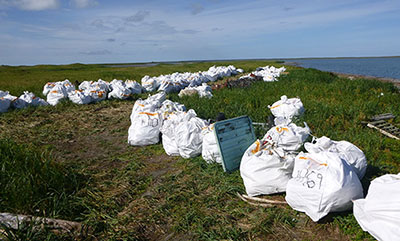
Tugidak Island is one of the largest harbor seal haulouts in the world. About 10 miles south of Kodiak Island, it’s a state designated Critical Habitat Area. It’s also a trash attractor. Not litter, but marine debris - the flotsam and jetsam of shipping and commercial fishing. This summer, a team of more than 40 volunteers collected about 85,000 pounds of debris from the island’s beaches, everything from a wrecked boat to fish tote lids.
The Kodiak-based nonprofit Island Trails Network (ITN) spearheaded the effort. Tom Pogson, ITN’s director of marine programs, outreach and education, described the clean-up and the weird assortment of debris.
“We filled 255 super sacks, those white, heavy, plasticized fabric sacks. They hold a cubic yard,” he said. “We had 255 sacks of debris that weighed 69,588 pounds. Plus an additional 15,000 to 16,000 pounds of other material, plus a rescue craft that washed off the deck of a rig - that was 18,000 pounds plus 700 pounds of fuel.”
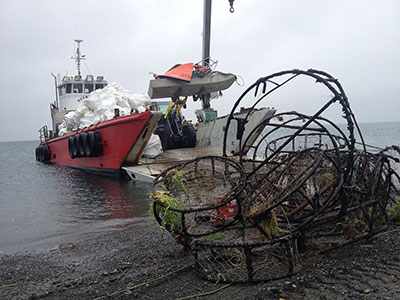
The rescue craft washed from the deck of the Kulluk drilling rig in 2012 when it broke free of its mooring and grounded on Kodiak. It was upside down on the beach, half buried in sand. Pogson said the additional debris included 30 or 40 black Japanese oyster floats, various giant chunks of plastic, and 84 crab pots.
“We had five of those Yokohama fenders that are used for big ships, they weigh 500 to 1,200 pounds each,” he said.
After the debris was hauled back to Kodiak in landing craft, volunteers were able to weigh it. Most of the weight was nets and line, floats and buoys, and fishing gear.
Tugidak (pronounced too-gee-dik) is a low, treeless island about six miles wide and 21 miles long; a series of bluffs rise above the beaches and the highest point is about 160 feet above sea level. Volunteers cleaned an 11-mile stretch of beach on the southeast side of the island, the north and west side of the island is designated as sensitive seal habitat and workers avoided that area.
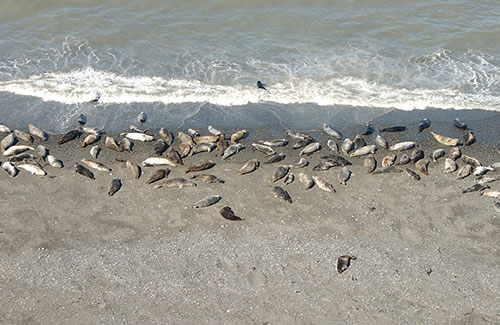
The island is uninhabited, although in the past John Garber and his family lived on the island seasonally and operated a recreational mining claim. Garber’s claim was grandfathered in when the island was designated as a critical habitat area in the 1980s.
Biologist Sue Goodglick spent seven seasons on the island monitoring and surveying harbor seals, observing and photographing animals. She described the island as very quiet. “Solitude and seals, thousands and thousands of seals,” she said. “It was one of the largest seal haulouts in the world. It’s particularly important for pupping and molting. It’s a pretty special place for the animals.”
Surveys in the mid-1960s reported 20,500 harbor seals hauled out on Tugidak. Harbor seal numbers declined in many parts of their range during the 1970s and 1980s (as did numbers of Steller sea lions and fur seals). A survey in the mid-2000s counted 3,333 seals. About 80 species of birds have been documented on the island.
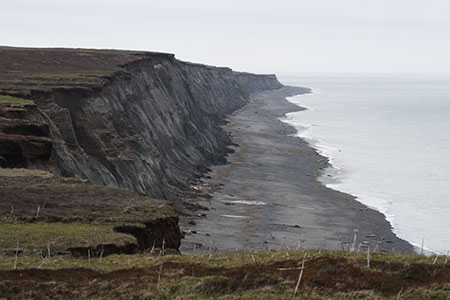
Pogson said the clean-up was a cooperative effort involving ADF&G, NOAA, USFWS and the Island Trails Network; volunteers included pilots, landing craft operators, fishermen and a variety of Kodiak Island residents.
“A lot of people came and helped,” he said. “They left slack jawed and glassy eyed at the amount of debris.”
NOAA provided a marine debris removal matching grant, and Fish and Game provided support as well.
“We needed to get a special area permit for the project, and Fish and Game reviewed the project and provided lots of suggestions,” he said. “We used Fish and Game’s ATVs in the first year.”
Pogson said the project began years earlier when two volunteer crews in 2009 and 2010 removed nearly 10,000 lbs of marine debris from Tugidak's shores and interior low-lying wetlands. ITN recognized the opportunity for a bigger project and set the wheels in motion.
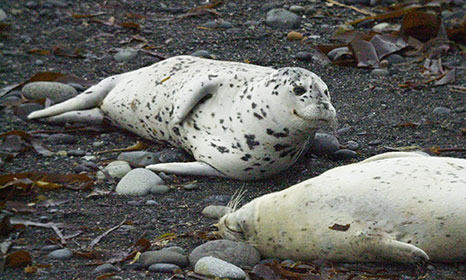
The debris is now stored at a designated marine debris storage yard on US Coast Guard land in the Buskin River Valley on Kodiak, and will not be landfilled on Kodiak Island. Pogson said in the past, plastic had been shipped out for recycling in China, but that avenue is no longer an option.
The Island Trails Network was involved in several other clean-up projects over the past two years as well. Coast Walk was a volunteer beach clean-up of 81 beaches along the Kodiak road system and 4,700 pounds of marine debris was collected. In 2013, more than 22,000 pounds of marine debris was removed from Shuyak, Afognak, and Kodiak islands. The Japanese Tsunami Marine Debris program funded by a Legislative Grant from the State of Alaska, led to the clean-up of more than 80,000 pounds of marine debris from Afognak Island.
Subscribe to be notified about new issues
Receive a monthly notice about new issues and articles.
